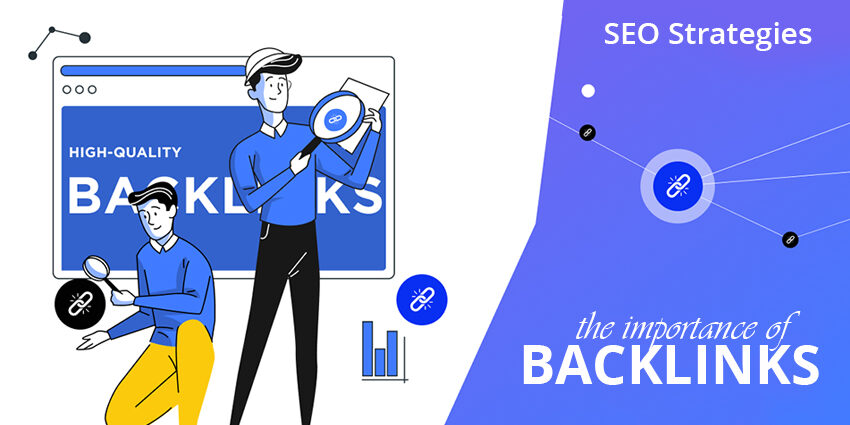What is a Backlink? Are backlinks important for SEO? What is the importance of backlinks for SEO? Why are backlinks important? The need to understand and implement high-quality campaigns is essential if you’re going to compete and thrive online, and that isn’t going to change any time soon. Backlinks remain an important aspect in search engine optimization or rather google ranking metric.
What is a Backlink?
Also known as “inbound links” or “incoming links”, backlinks are created when one website links to another website. If another business is linking your site on their website, they trust your site and your content enough to link to it. This is helpful for SEO as Google monitors which sites trust your site and content.
Reputable sites backlink to other reputable sites while spammy sites likely link to other poor-quality sites. Linking to any site with spam can result in Google and other search engines penalizing your site. Search engines crawl and reward or penalize site ranks to avoid leading users to any sort of spam. If you link to poor-quality websites, there’s a good chance your site will lose ranks.
Why Are Backlinks Important? – Importance of backlinks for SEO.
Backlinks are important for SEO because they signal to Google that another resource finds your content valuable enough to link to it within their own content. As a website earns additional backlinks, search engines infer that the website possesses valuable content worth ranking well on the SERPs.
How Are Backlinks Earned?
Gaining backlinks is an essential component to off-site SEO strategy. In fact, backlinks are the most significant off-site ranking factor! Backlinks are earned in three primary ways.
- Natural links are given without any action on the part of the website owner. For example, the mountain climbing illustration above would involve a natural link if the hiking gear website had no role in receiving that link. One of the best ways to organically obtain natural links is by consistently creating high-quality content.
- Manual links are acquired through link earning activities. If the hiking gear website reached out to the climbing resource and requested a link, the backlink would be manual. Guest blogging for a relevant website is another strategic method to gaining a manual link. Be sure to link to your website within the content.
- Self-created links are created when a site manager manually adds a backlink into a forum, blog comment, or online directory. Be careful – while self-created links may appear to be the easiest way to gain backlinks, many of the tactics tend toward “black hat SEO,” strategies that negatively impact search engine reputation. These links are typically labeled by “no follow” tags.
Are All Backlinks Valuable?
While backlinks are generally desirable, not all backlinks are as valuable as others. Some are inherently more advantageous to earn – others should be avoided whenever possible. Understanding the influencers of backlink value is crucial for link building and evaluating the health of your backlink profile.
1. Follow vs. no follow backlinks
Site owners can specify if an individual link passes link equity or not. A no follow link does not pass link equity – colloquially called “link juice” – to the linking domain, while a follow link does. While followed backlinks are much more desirable, no follow links from high-quality websites can still be beneficial to enhance your brand.
(Interestingly, local SEO strategy views follow and no follow links from relevant, localized websites as equally valuable.)
2. Authority of linking domain
Backlinks obtained from linking domains of high authority usually offer more value (link equity) than links from low-quality, new, or spammy websites. Backlinks from spammy websites should be avoided whenever possible.
3. Link relevancy
Google knows if a backlink is irrelevant. If a gluten-free bakery in California links to your brick-and-mortar hiking gear shop in Colorado, the backlink is not extremely relevant and will likely not pass as much link juice as the backlink received from the mountain climbing site.
4. Link location
Website architecture is significant to Google, as is the positioning of a link on the page. For example, a backlink tucked in the footer of a page may not pass as much equity as one added in a relevant blog post paragraph.
5. Link number
A backlink listed among hundreds or thousands of links on a single page is likely not as valuable as a link referenced among fewer. Beyond link equity, a user would be hard-pressed to locate your link among the hundreds and click through to your content, eliminating value.
6. Anchor text
Anchor text is the visible characters or words that display a hyperlink within content, often underlined and uniquely colored. In the previous sentence, “anchor text” is the anchor text for an outbound link. Certain anchor text is deemed SEO-friendly, passing more equity than others. Succinct, relevant, and non-generic text is preferable.
For example, linking to this blog post with the anchor “importance of backlinks for SEO” is preferable to linking with the generic text “click here.”






